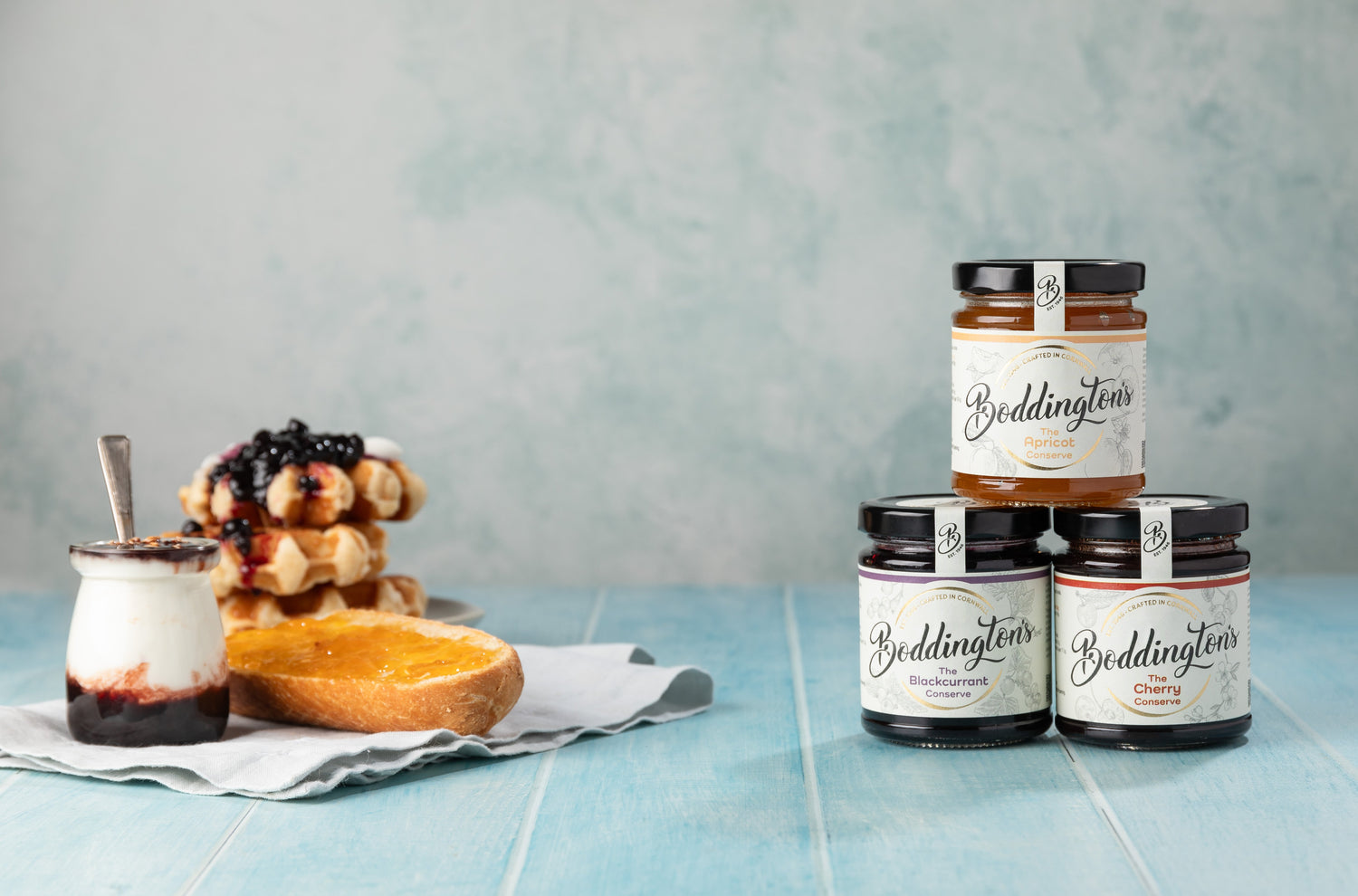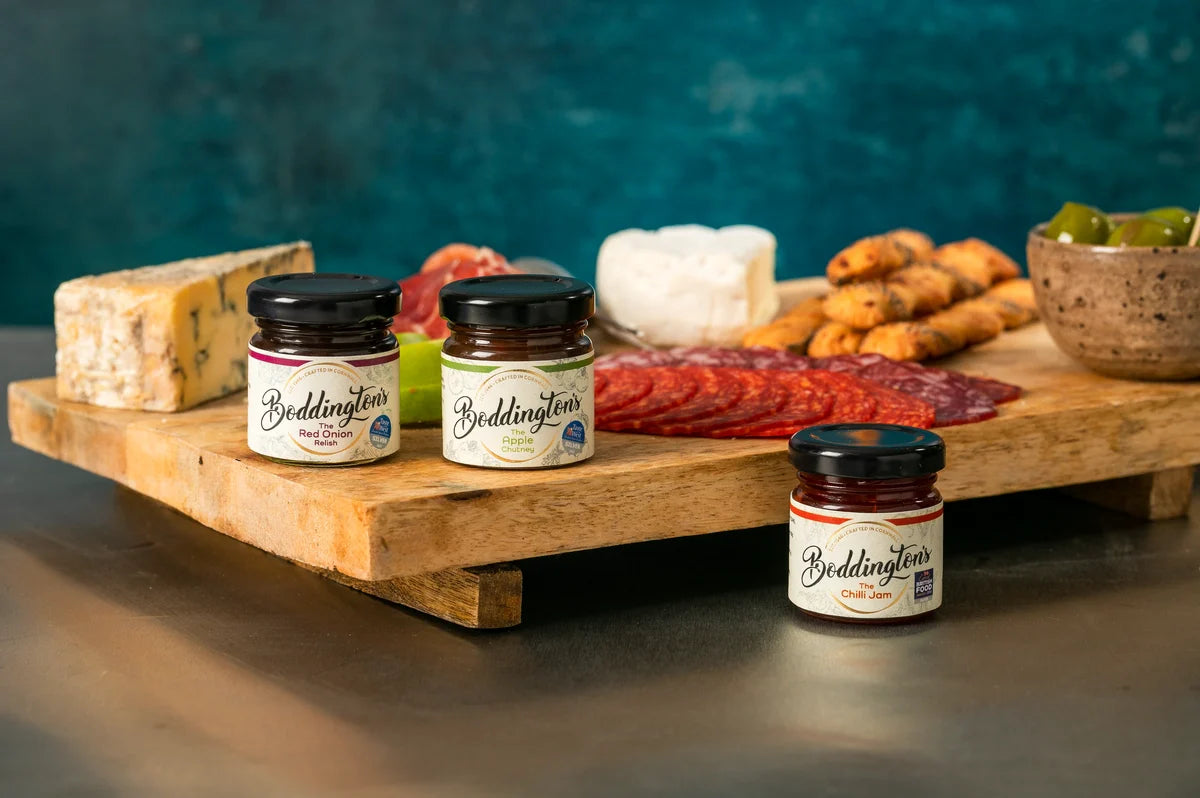What is the Difference Between Jam, Conserve, and Jelly?
Let's Clear Up the Sweet Confusion!
Have you ever wondered what sets jams, conserves, and jellies apart? We're here to spill the fruity beans (or should we say, berries!) and help you navigate the delicious world of fruit spreads!
Historical Origins
Preserves came about as a solution for preserving soft fruits and vegetables that are difficult to freeze. For example, strawberries have a high water content, and due to the breakdown of cells during freezing and thawing, they often lose flavour. To counter this, preserves were developed, allowing seasonal products to be enjoyed all year round. This practice dates back to the ancient Greeks and Romans, who used honey to preserve fruits.
At the core, these spreads originate from fruit, containing various vitamins, antioxidants, and minerals intrinsic to the respective fruits. While these benefits are appealing, it's essential to remember that traditional preserving methods often involve high sugar content.
A Quick Note on Pectin
Pectin is the magic behind that perfect jammy set. Naturally present in many fruits (especially apples and citrus), pectin helps thicken jams, conserves, and jellies. Some fruits, like strawberries, cherries, or blueberries, are lower in natural pectin, so recipes often call for a boost with added pectin. You’ll see both powdered and liquid pectin on supermarket shelves, but many traditional recipes use lemon juice for a natural lift. Too much artificial pectin can add an “apple” aftertaste, so if you’re after pure fruit flavour, a squeeze of lemon is your friend.
Jam: The Classic
Jams are made with pieces of fruit or pulp (crushed, whole fruit), sugar, and often added pectin (a gelling/thickening agent). Jams achieve a firm but spreadable consistency. Whether you're slathering it on toast or swirling it into yoghurt, jam adds a burst of flavour to any dish.
Jams are made with pieces of fruit or pulp (crushed, whole fruit), sugar, and often added pectin (a gelling/thickening agent). Jams achieve a firm but spreadable consistency. Whether you're slathering it on toast or swirling it into yoghurt, jam adds a burst of flavour to any dish. In the UK, it must contain a minimum sugar content (including fruit sugars) to meet jam regulations, typically around 60%, and the total required fruit content varies depending on which type is being used. The fruit is typically chopped or crushed and slowly cooked with the sugar until it thickens. Think of jam as the all-rounder; chunky, fruity, and just sweet enough.
Conserve: The Fancy Cousin
Think of conserves as the sophisticated cousin of jam. Through the process of slow cooking whole fruit with sugar, conserves retain the whole fruit in a soft set. The result is a rich, textured spread bursting with layers of fruity goodness. These tend to be the chunkiest spreads due to the high fruit content. To achieve the perfect conserve set, additional fruit pectin is often needed. Artificial pectin can add an "apple" flavour, so we prefer lemon juice as a natural alternative.

Jelly: The Smooth Operator
Jellies stand apart from jams and conserves because they are made from fruit juice rather than whole fruit. After simmering the fruit juice with sugar and pectin, the mixture is strained to remove any pulp or solids. This process results in a clear, smooth spread with a firm, jelly-like consistency. Jellies offer a refined, elegant addition to your pantry, perfect for those who prefer a smooth, glossy texture.
To meet the official definition in the UK, jelly must be made from fruit juice (with no seeds or pulp) and typically contains a high percentage of sugar to ensure proper preservation, usually around 60%. This is why lower-sugar products often can’t legally be called jelly and are instead labelled as ‘fruit spreads’. Jelly holds its shape well when spooned from the jar, making it a favourite for those who prefer a smooth, seedless option.
Marmalade: The Citrus Sensation
Often mistaken for another "jam," marmalade's unique citrus ingredients set it apart. While jams use fruit and pulp, marmalade incorporates the zest and rind of citrus fruits, providing a vitamin C boost for your morning toast. The tangy flavour and distinctive texture make marmalade a standout in its own category.
What truly defines marmalade is its generous pieces of citrus peel (think orange, lemon, or even grapefruit) suspended in a glossy jelly. It’s sweet, sour, thick, and occasionally a bit chewy when you bite into a chunk of rind. Unlike most fruit preserves, marmalade doesn’t need added pectin; the citrus rinds themselves naturally provide all that’s needed for the perfect set. And, just like a classic jam, marmalade must reach 65 per cent soluble solids, ensuring the right balance of spreadability and sweetness.
So, whether you spread it on toast or sneak a spoonful straight from the jar, marmalade brings a little sunshine to your breakfast table, one zesty bite at a time.

Compote: The Comforting Classic
Now, let’s talk about compote, a delightful old-world treat that deserves its time in the sun (or on your scones!). Unlike jelly’s crystal clarity or conserve’s fruit-packed richness, compote is all about celebrating chunks of fruit in a gently simmered syrup. Traditionally, compote is made by briefly cooking whole or roughly chopped fruits with just enough sugar to enhance their natural sweetness. Rather than boiling things down into a gel, you want to keep the fruit tender but intact.
Often, a sprinkle of spices like cinnamon, ginger, or star anise is added to infuse extra warmth and depth. The result? A luscious, spoonable topping that’s equally at home over pancakes, porridge, or even a scoop of vanilla ice cream.
Chutney: The Savoury Sidekick
Not all preserves are sweet! Chutneys bring a savoury, tangy twist to the table. Made with less sugar but with added spices, and often vinegar, chutneys are a staple of Indian cuisine but are equally at home paired with roast meats, cheeses, or even sandwiches. Think Apple Chutney with pork, or tangy Cranberry Relish with turkey leftovers.











